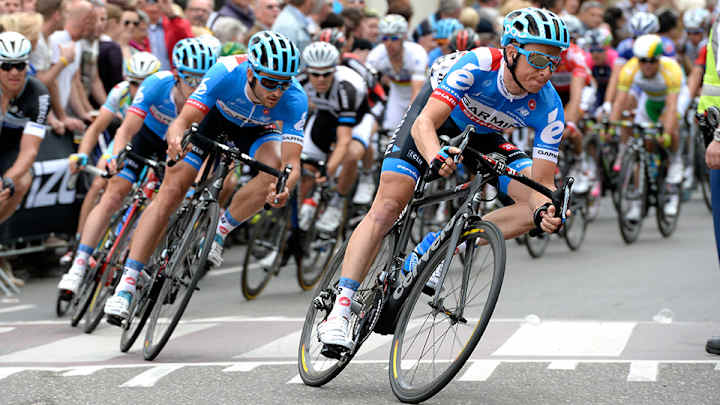How They Train: Gearing Up for the Tour With the Garmin-Sharp Team

Twenty-one stages, 2,267 miles, 198 riders, 12 million spectators, and 101 years of history: The Tour de France is the most prestigious and arguably the most grueling cycling race in the world. The 23-day event takes riders up and over three mountain ranges and through four countries, in a distance about equal to the drive from Boston to Salt Lake City. So how on Earth do riders train to prevail in such a crucible?
“I expect to go through some rough days,” says Ben King, one of nine cyclists on the American Garmin-Sharp Team, who will compete in his first Tour de France this year. “People talk about the hammer that hits some time around 10 days into the race—they say it's key to overcome that. But it's already clear that the pressure and stress surrounding this race are immense.”
King knows something about stress—he overcame enough of it in 2010 to win the National Road Race Championships. But it’s different when you’re dealing with a race of such international acclaim as the Tour, says Robby Ketchell, director of sport science for Garmin-Sharp and the man responsible for all training of the Boulder, Colo.-based team.
“We’ve been preparing our riders for the Tour since January,” Ketchell says. “It’s about progressively overloading each rider with the right metrics so he can peak at the right moment.”
Can Chris Froome Repeat? Previewing the 2014 Tour de France
In simpler terms, this means pushing each rider to get stronger and faster without pushing him so hard that he ends up overtrained, injured, or simply too tired by the time the Tour rolls around. It’s a delicate dance that Ketchell says he begins early in the year by building up each cyclist’s endurance and strength, and then socking them with more intense speed and climbing sessions as the Tour approaches.
“A really big week would be anywhere between 25 and 30 hours of riding,” says Ketchell. “Closer to the Tour, we do a lot of climbing—between 20 to 40 minutes on a four-hour ride, sometimes on a 15- to 17-percent gradient. A lot of times, the road serpentines, and if you’re just a general cyclist riding up, you’d have to serpentine with the road. But these guys just go straight up. It’s pretty grueling.”
Grueling, however, is what gets results, and Ketchell and the rest of Garmin-Sharp have high hopes for the team’s leader, Andrew Talansky—the best U.S. hope for a podium placement, if not the yellow jersey. “When he’s doing some of his biggest training loads, he’s riding up to four or five hour a day, sometimes six,” Ketchell says. “But there are so many variables—that’s what makes cycling so great and so hard to predict. [Talansky’s] done all the preparation he can, so he has a really great shot.”
Tour de Tech: Staging the World's Greatest Bike Race
Part of Talansky’s preparation, along with that of every other cyclist on the Tour, is to race—and race a lot. According to Ketchell, Talanksy has logged 35 racing days since January (including the recent eight-stage Critérium du Dauphiné in early June, which he won); other cyclists on the Garmin-Sharp Tour team have put it close to 50 racing days. Oftentimes, too, riders don’t have much recovery time between their last race and the Tour—King, for example, wrapped up the nine-stage Tour de Suisse only 12 days before the start of the Tour de France. “The racing part is something [the fans] really don’t think about,” Ketchell says. “But these riders are doing a significant amount of hours in the peloton before the Tour.”
There are other variables that influence—and sometimes sidetrack—Tour training. The race’s route changes every year, and with it the terrain and weather conditions. Perhaps more significantly, the teams also change, and many riders don’t know whether they’ll be part of the Tour until just days before race time. “Our Tour team wasn’t picked until a couple of weeks ago,” says Ketchell. “It all depends on the health of the rider and how they’re performing.”
The uncertainty of whether a cyclist will make the Tour team, the dual demands of training and racing, the months upon months of four-hour days on the bike, the agonizing climbs up hills that look more like stock graphs with triple-digit growth—it all culminates in a race that Ketchell says no amount of training can truly prep a rider for. “I think experience makes all the difference,” he says. “You really can’t prepare for the setting of the Tour because there’s nothing else like it.”
